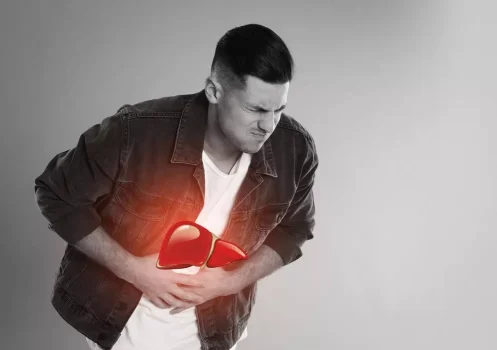
We prioritized multiple genes with convergent evidence linking association to PAU with gene expression and chromatin interaction in the brain, and we investigated genetic correlations with multiple traits in AFR, also not possible previously. On the basis of these advances, we identified existing medications predicted to be potential treatments for PAU, which can be tested. Alcoholism has a substantial heritability yet the detection of specific genetic influences has largely proved elusive. Moreover, it has become apparent that variants in stress-related genes such as CRHR1, may only confer risk in individuals exposed to trauma, particularly in early life.
Supplementary Data 44

Multiple GO biological processes are enriched for AUDIT-C (Supplementary Data 13, Supplementary Fig. 17) and AUD (Supplementary Data 14, Supplementary Fig. 18), including ethanol and alcohol metabolism. Enrichments for chemical and genetic perturbation gene sets and for the GWAS catalog for both traits are shown in Supplementary Data 15–18 and Supplementary Figs. This is an illustration of an Illumina GoldenGate array that was custom designed to include 1350 haplotype tagging single nucleotide polymorphisms (SNPs) within 127 stress- and addictions-related genes. This array was designed for Caucasian and African ancestry, hence the limited number of alcohol metabolism genes. The most robust finding for genetic influences on alcoholism remains with genes encoding ethanol metabolizing enzymes. These genetic variants have a high prevalence in East Asians and protect against the development of alcoholism.
Genetic Influences on Alcohol Metabolism
After correction for 714 tested traits, the genetic correlations for 188 traits showed significant differences between the two alcohol-related traits (Supplementary Data 36). We explored trait and disease associations for AUDIT-C-adjusted for AUD and AUD-adjusted for AUDIT-C, and found that the genetic correlations between the alcohol-related traits and other phenotypes did not differ substantially from the unadjusted https://ecosoberhouse.com/ ones (Supplementary Data 37, 38). Additionally, we explored genetic correlations for AUDIT-C-adjusted for BMI (Supplementary Data 39) and AUD-adjusted for BMI (Supplementary Data 40). Most of the genetic correlations for AUDIT-C-adjusted for BMI did not differ substantially from the unadjusted ones, except for anthropometric traits, where the negative correlation was attenuated (although still significant).
Probabilistic fine mapping of TWAS
The strong effects of binge drinking suggest that merelycalculating an average number of drinks per week is likely to obscure many effectsof alcohol, since it treats 2 standard drinks per day (14 per week) the same as 7drinks on each of two days per week. While genetics can account for up to 60% of AUD risk, not everyone with a family history of AUD will develop the condition. AUD isn’t directly caused by genetics, but genetics may predispose you to developing AUD later in life. This risk is considered hereditary and may be passed down to you if you have a family history of AUD. Your genetics don’t only increase your risk of AUD — they may have protective elements as well.
Long-term impact of digital media on brain development in children
This means that two people with the same diagnosis (e.g., alcohol dependence as defined in the Diagnostic and Statistical Manual of Mental Disorders, Third Edition, Revised [DSM–III–R] of the American Psychiatric Association [APA] [1987]) may have different sets of symptoms, greatly complicating genetic analyses. Therefore, COGA researchers gathered a detailed psychiatric history of each participant, along with electrophysiological data (electroencephalograms [EEGs] and event-related potentials [ERPs]). These multiple domains of data (described in detail in Begleiter et al. 1995, 1998; Hesselbrock et al. 2001) provide a rich resource for exploring phenotypes related to alcoholism. In addition, they allow analyses under standard diagnostic systems, such as the 4th edition of the DSM (DSM–IV) (APA 1994) and the 10th edition of the International Classification of Diseases and Related Problems (ICD–10) of the World Health Organization (WHO) (1992–1994). Innovative statistical approaches are being pioneered to make biological sense out of GWAS data. Another approach that has been proposed is to use stratified False Discovery Rate methods to uncover new loci likely to replicate in independent samples.
- Family studies have consistently demonstrated that there is a substantialgenetic contribution to alcohol dependence.
- A changing definition of the heterogeneous phenotype of AUD may also pose a challenge to identifying genetic variants through GWAS.
- The Collaborative Study on the Genetics of Alcoholism (COGA) is a large-scale family study designed to identify genes that affect the risk for alcoholism (i.e., alcohol dependence) and alcohol-related characteristics and behaviors (i.e., phenotypes1).
- In genetics, the concordance rate signifies the likelihood of two individuals with similar genes manifesting the same condition.
New alcohol-related genes suggest shared genetic mechanisms with neuropsychiatric disorders

In addition, COGA researchers are currently re-interviewing participants as part of a 5-year followup. This strategy will allow the investigators to increase the reliability of the data and to refine the phenotypes, which in turn will enhance the power of the genetic analyses. The SNP heritability of our GWASs was lower than that seen in the meta-analysis of the UKBB and 23andMe data8. For the AUDIT-C, the estimated SNP heritability was 0.068 in EAs (0.068 in males and 0.099 in females) and 0.062 in AAs. For AUD, the estimated SNP heritability was 0.056 in EAs (0.054 in males and 0.110 in females) and 0.100 in AAs.

A second approach that will likely benefit the alcohol researchcommunity will be greater examination of pathways or gene sets. These approacheshave been quite fruitful for some studies and need to be employed in analyses ofalcohol-related traits and phenotypes. Over the next few years, we anticipate theidentification of additional common and rare variants contributing to the risk ofalcohol dependence. Alcohol is widely consumed, but excessive use creates serious physical,psychological and social problems and contributes to many diseases. Alcoholism(alcohol dependence, alcohol use disorders) is a maladaptive pattern ofexcessive drinking leading to serious problems.
Supplementary Data 9

The Collaborative Study on the genetics of alcoholism (COGA) is a family-based study that has collected detailed phenotypic data on individuals in families with multiple alcoholic members. A genome-wide linkage approach led to the identification of chromosomal regions containing genes that influenced alcoholism risk and related phenotypes. Subsequently, single nucleotide polymorphisms (SNPs) were genotyped in positional candidate genes located within the linked chromosomal regions, and analyzed for association with these phenotypes. Using this sequential approach, COGA has detected association with GABRA2, CHRM2 and ADH4; these associations have all been replicated by other researchers. COGA has detected association to additional genes including GABRG3, TAS2R16, SNCA, OPRK1 and PDYN, results that are awaiting confirmation. These successes demonstrate that genes contributing to the risk for alcoholism can be reliably identified using human subjects.
However, because the MVP sample is predominantly comprised of EA males, statistical power was limited in both the GWAS and the post-GWAS analyses of other populations and some female samples. Future studies with larger sample sizes are needed to identify additional variation contributing to these alcohol-related traits and to elucidate their interrelationship. In this Article, to improve our understanding of the biology of PAU in multiple populations, we conducted substantially larger ancestry-specific GWAS of PAU followed by a cross-ancestry meta-analysis in 1,079,947 individuals from multiple cohorts. We identified 85 independent risk variants in participants of EUR ancestry and 110 in the within-ancestry and cross-ancestry meta-analyses. We investigated the shared genetic architectures of PAU across different ancestries and performed fine mapping for causal variants by combining information from multiple ancestries. A drug repurposing analysis identified potential medications that have the potential to inform further pharmacological studies.